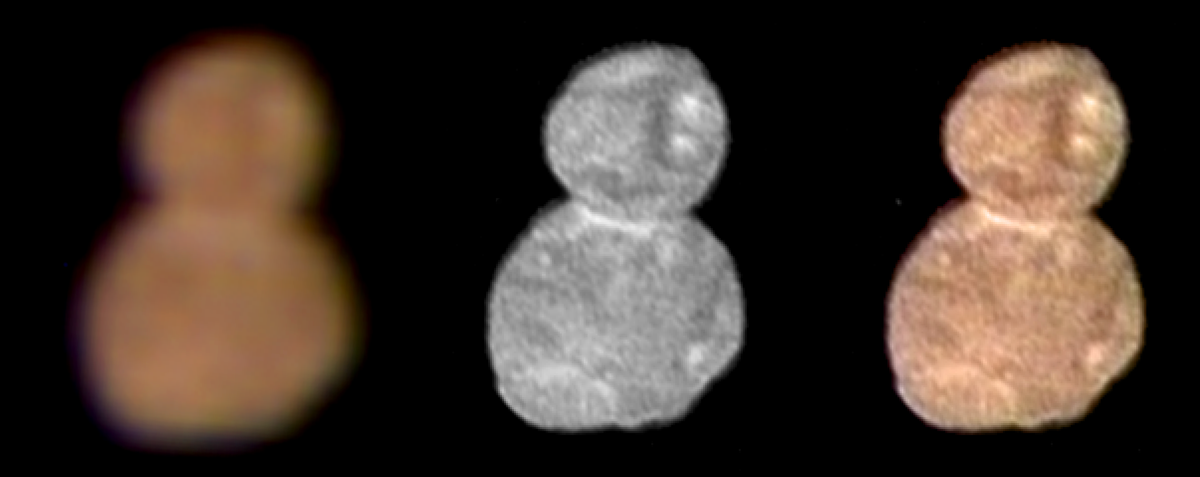NASA's New Horizons probe is sending back the first detailed images of Ultima Thule, a mysterious, city-size rock lingering in the vicinity of the Kuiper Belt beyond Pluto. To astronomers' surprise, images from the New Year's Day flyby reveal that Ultima Thule is a "contact binary," which means it consists of two connected spheres that were previously separated but now joined together.
To Earthlings, it looks like a snowman.
"This flyby is a historic achievement,"Principal Investigator Alan Stern of the Southwest Research Institute in Boulder, Colorado, said in a statement. "Never before has any spacecraft team tracked down such a small body at such high speed so far away in the abyss of space. New Horizons has set a new bar for state-of-the-art spacecraft navigation."
The images have been taken from as close as 17,000 miles, though it will take days for the high-resolution photos to be uploaded to Earth, given the bandwidth limitations of moving data across the span of the entire solar system. The larger sphere, which is an estimated 12 miles across, has been named "Ultima." The smaller one, which is 9 miles across, is "Thule." Together they form Ultima Thule, a frozen world that is nearly 4.5 billion miles from Earth, more distant than Pluto.
In a press conference, Stern elaborated on what scientists have discovered from preliminary images.
“It’s only really size of something like Washington, D.C., and it’s about as reflective as garden-variety dirt,” he said. “And it’s illuminated by a sun that’s 1,900 times fainter that it is outside on a sunny day on Earth, So we’re basically chasing it down in the dark at 32,000 mph.”
These details though will provide scientists with a new perspective on planet formation.
"New Horizons is like a time machine, taking us back to the birth of the solar system. We are seeing a physical representation of the beginning of planetary formation, frozen in time," Jeff Moore, New Horizons Geology and Geophysics team lead, said in a statement. "Studying Ultima Thule is helping us understand how planets form — both those in our own solar system and those orbiting other stars in our galaxy."
This is just the beginning of what we will learn about this otherworldly object. In the next few days and weeks, more details images of Ultima Thule will arrive, providing more insights.



Shares